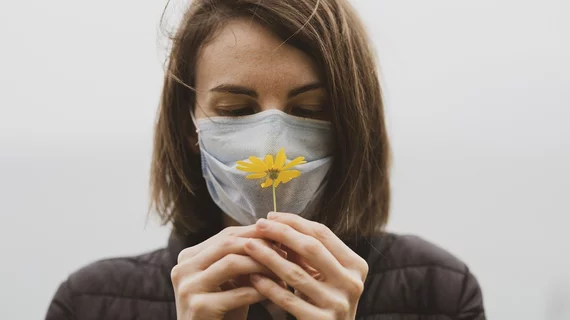COVID long-haulers with loss of smell display brain connectivity impairments on MRI
Experts recently identified alterations in regions of the brain that process smell in COVID long-haulers.
A group of researchers at University College London made this observation after comparing the brain MRIs of COVID long-haulers with persistent loss of smell (also known as anosmia), those who had recovered their sense of smell and a group of individuals who had never been infected with the respiratory virus. The team noted impairments in the orbitofrontal cortex and the pre-frontal cortex in those who had not yet regained their ability to smell.
Specifically, the group noted increased functional connectivity between the left orbitofrontal cortex (OFC), visual association cortex and cerebellum and reductions in connectivity between the right OFC and dorsal anterior cingulate cortex in comparison to the other two groups.
In the recovered group, these impairments were not observed, suggesting that the alterations in connectivity are reversible.
“Persistent loss of smell is just one-way long Covid is still impacting people’s quality of life—smell is something we take for granted, but it guides us in lots of ways and is closely tied to our overall well-being,” lead author of the study Jed Wingrove, with the UCL Department of Medicine, and colleagues noted. “Our study gives reassurance that, for the majority of people whose sense of smell comes back, there are no permanent changes to brain activity.”
The team indicated that their work highlights a need for further research into the potential of “olfactory training,” which could help individuals suffering from anosmia to more quickly recover.
“Our findings highlight the impact COVID-19 is having on brain function. They raise the intriguing possibility that olfactory training—that is, retraining the brain to process different scents—could help the brain to recover lost pathways, and help people with long COVID recover their sense of smell,” co-senior author of the study Professor Claudia Wheeler-Kingshott, with the UCL Queen Square Institute of Neurology, and colleagues noted.
The study abstract is available in eClinicalMedicine.

